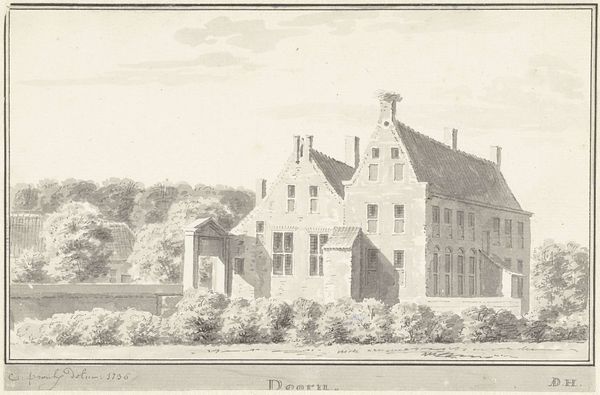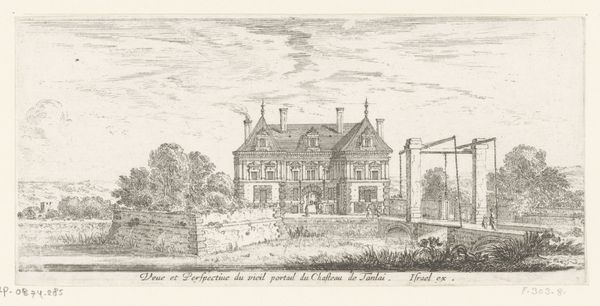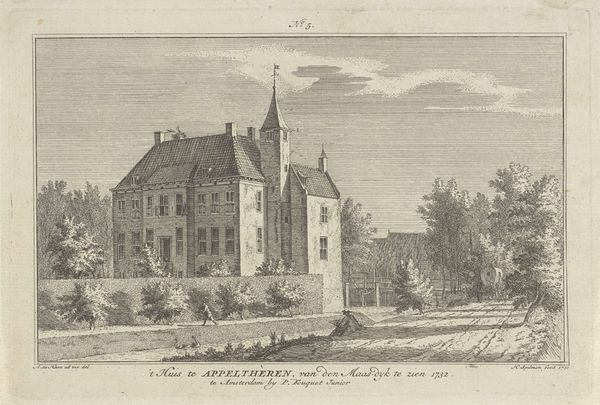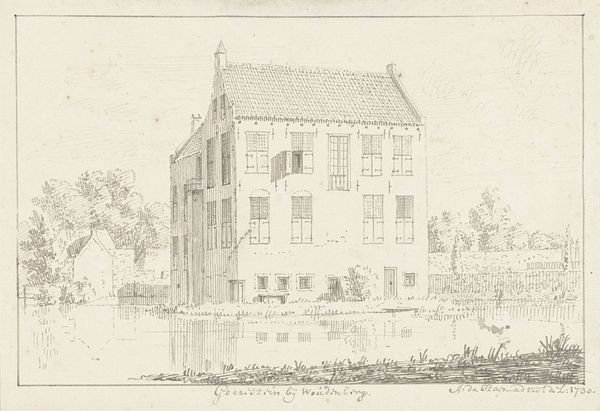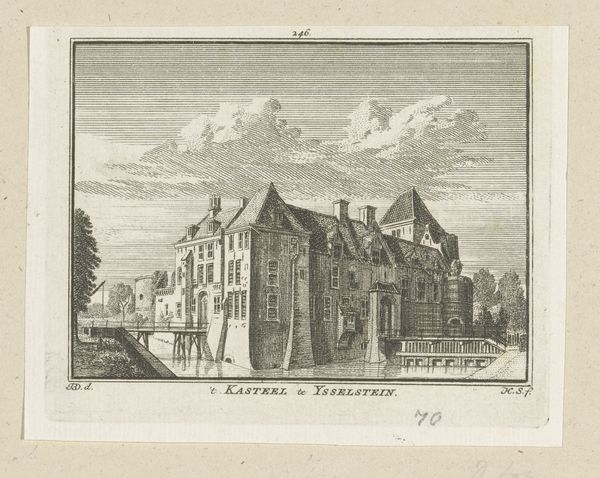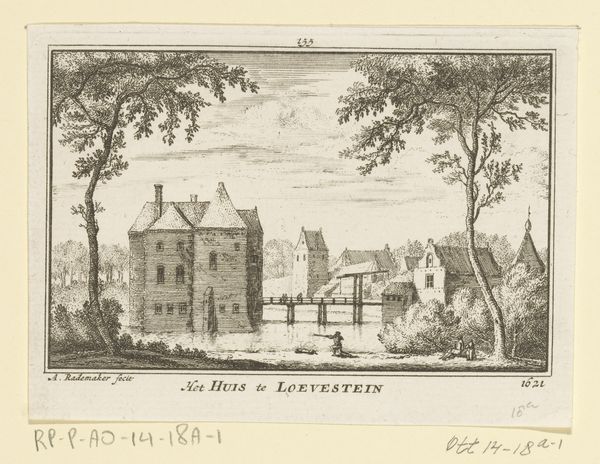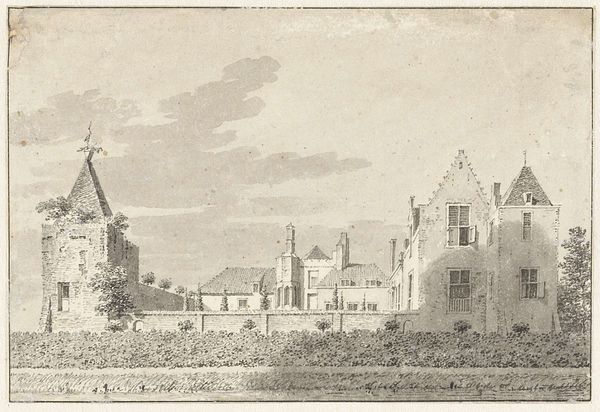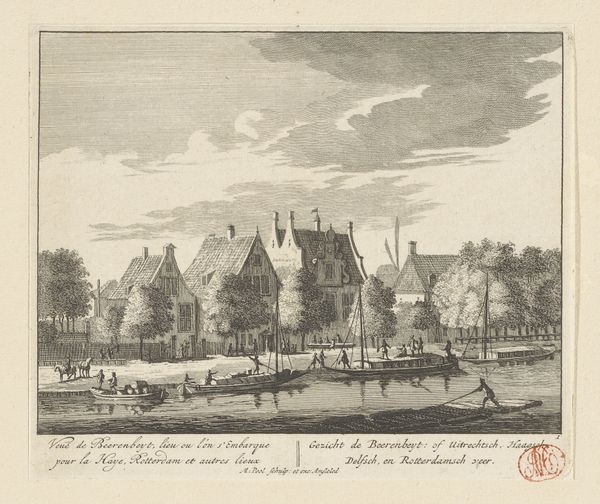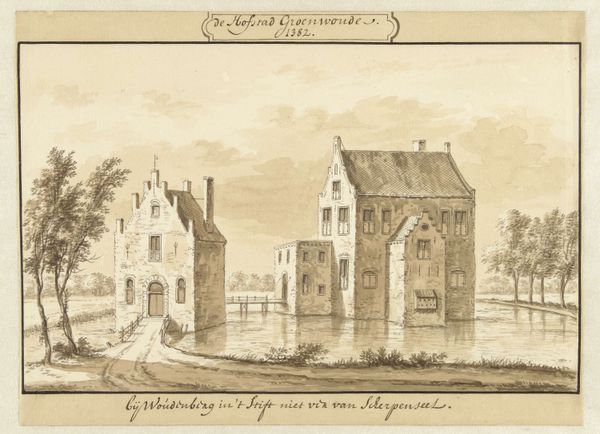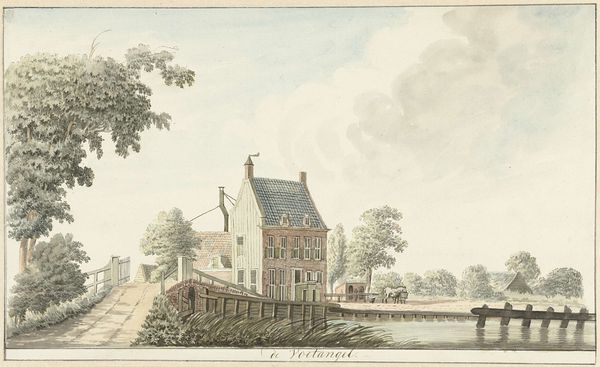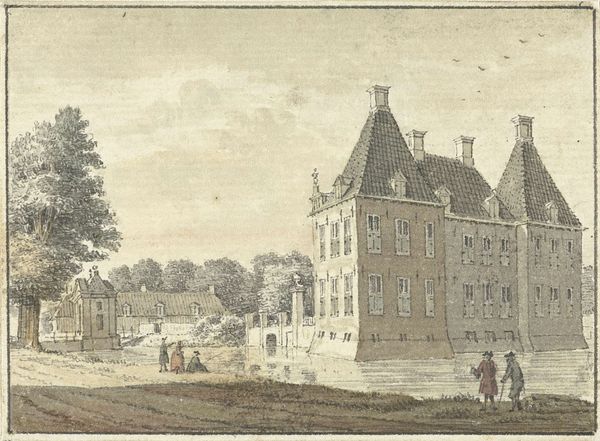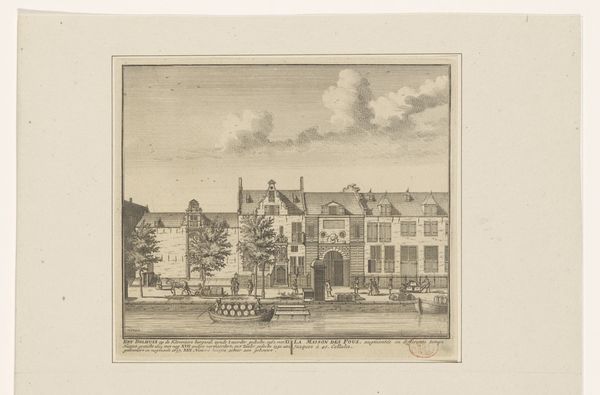
drawing, paper, ink, architecture
#
architectural sketch
#
drawing
#
aged paper
#
dutch-golden-age
#
mechanical pen drawing
#
old engraving style
#
sketch book
#
landscape
#
paper
#
personal sketchbook
#
ink
#
sketchwork
#
geometric
#
pen-ink sketch
#
pen work
#
cityscape
#
storyboard and sketchbook work
#
architecture
Dimensions: height 135 mm, width 174 mm
Copyright: Rijks Museum: Open Domain
Curator: Here we have Jacobus Stellingwerff's "Het kasteel Groenewoude bij Woudenberg, in 1382," a drawing created sometime between 1670 and 1736. It depicts Groenewoude Castle in the Dutch countryside. Editor: It feels like a half-remembered dream, doesn't it? Faint lines on aged paper, a ghost of a castle hovering just out of reach. I wonder, is it nostalgia or just the sepia tones playing tricks on my mind? Curator: Indeed, that sepia tone comes from the ink and the passage of time on the paper. I'm drawn to how Stellingwerff used the mechanical pen to define the architectural forms of the castle. You can clearly see his process of sketching, correcting, refining. The lines create volume in this landscape scene. Editor: You can tell it was "in progress," in a state of constant revision. Speaking of process, do you get a sense of the passage of time—the artist revisiting the scene across years, maybe? The trees, for example, are less geometrically precise. Did he pause on those? What’s your interpretation? Curator: That's fascinating, the organic form of the landscape versus the geometric nature of the castle. We see the hard versus soft edge and the linear versus organic style. The geometric shape indicates constructed order, the natural depicts the chaos around the stronghold. It hints at the ongoing negotiation between humans and the world they inhabit. Editor: Absolutely. Castles always strike me as such loaded symbols of control—the desire to dominate space and time. And yet, look how gently it sits within its landscape here, almost absorbed by it. A somewhat benign fortress. Or a statement on the illusion of control, or power... Curator: The use of drawing instead of painting as the selected medium impacts the tone. It offers more flexibility. I sense the fleeting qualities and ephemeral moments as key, as opposed to the timeless depiction of what can survive. This creates a vulnerability, a dreamlike vision. Editor: Yes! It invites us to consider that all fortresses—all our carefully constructed narratives—are ultimately susceptible to time and memory. Perhaps Stellingwerff is telling us not to take them too seriously... and to value the surrounding orchard.
Comments
No comments
Be the first to comment and join the conversation on the ultimate creative platform.

